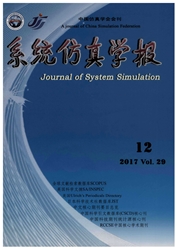

 中文摘要:
中文摘要:
典型微机电系统由受多能量域约束的功能器件与集成电路信号处理元件构成,具有多物理场耦合的特点。利用宏模型进行快速的系统级仿真分析是求解耦合MEMS静、动态行为的有效方法。对目前建立MEMS器件宏模型的方法做了系统总结,重点介绍了基于伽辽金思想的基函数叠加和基于有限元方程的矩阵子空间投影等数值宏建模方法,比较了各种方法的优缺点并给出了不同方法的适用条件和选择原则,讨论了目前系统级仿真面临的主要难点并提出了未来宏建模方法的发展方向.
 英文摘要:
英文摘要:
Most of typical MEMS are composed of functional devices restraint in multiple energy domains and integrate sensing or testing circuit units for signal processing. The method based on macromodel to simulate static and dynamic behavior characteristic of MEMS has become a famous research field. Macromodeling methods were reviewed and summarized for MEMS devices especially referred to two strategies: the superposition of basic function based on Galerkin method and the matrix subspace projection based on finite element equations. The advantages and disadvantages of each implementation were analyzed and then some selection principle was proposed when utilizing them. The main difficulties of system-level simulation were discussed and finally the development direction for macromodeling was indicated.
 同期刊论文项目
同期刊论文项目
 同项目期刊论文
同项目期刊论文
 期刊信息
期刊信息
